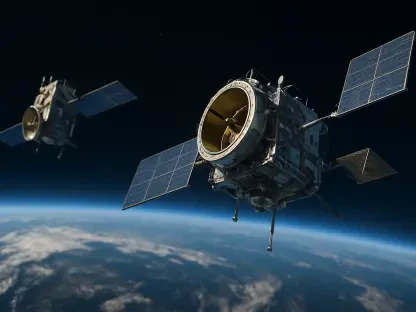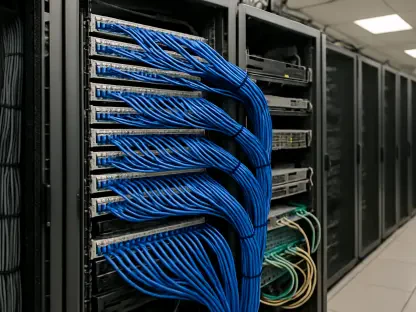A two-day outage experienced by Low-Earth Orbit (LEO) satellite operator OneWeb due to a ground system software bug emphasizes the importance of satellite service resiliency and preparedness against such disruptions. The incident, caused by a failure to account for the 2024 leap year, affected all active OneWeb customers starting on December 31, spotlighting the potential vulnerabilities in satellite network systems. The inability to redirect traffic to its Geostationary (GEO) satellites further complicated the situation since customers did not possess terminals that supported both LEO and GEO functions. This gap has brought Hughes Network Systems, the entity responsible for the software of OneWeb’s terminals and operational hubs, into the spotlight.
Implications of the OneWeb Outage
Disruption at a Crucial Junction
This outage has occurred at a particularly sensitive time for OneWeb as the company is in the midst of expanding its services to enterprise and government clients globally. With ambitions to complete the remaining gateways by mid-year, OneWeb aims to increase its footprint and secure a more significant share of the growing satellite market. To mitigate the damages caused by the service disruption, OneWeb has promised to compensate affected clients based on the minimum service level clauses in their contracts.
This incident underscores the critical need for robust and resilient network infrastructure, particularly as businesses and governments become increasingly reliant on satellite services for communication, internet access, and as a backup for terrestrial networks. The event also illustrates the vulnerability of relying on complex software systems, highlighting a need for redundancy and fail-safes in satellite operation procedures to guard against unexpected glitches.
Eutelsat’s Plans for Strengthening Infrastructure
In response to the outage and the growing market demands, Eutelsat, OneWeb’s parent company, is taking significant steps to bolster its satellite infrastructure. Eutelsat has launched a plan to refresh its satellite constellation, intending to replace the early batches of satellites, launched between 2019 and 2023, with 100 new satellites ordered from Airbus by 2026. This considerable investment underpins the ongoing necessity for resilient satellite infrastructure and aims to assure continuous, reliable service amidst increasing reliance on satellite networks.
This plan aims to ward off future service interruptions and promote overall network resiliency, alleviating concerns by providing a more reliable backbone for OneWeb’s growing customer base. The actions reflect an understanding that robust satellite infrastructure is fundamental to staying competitive in the LEO market, ensuring enterprises stay connected and critical communications remain uninterrupted.
The Growing Importance of Satellite Services Post-Outage
Increasing Reliance on Satellite Networks
The recent outage of OneWeb throws into sharp relief the increasing reliance on satellite services as a backstop for terrestrial networks, especially in the wake of severe weather events like Hurricane Helene. In such scenarios, satellite connectivity is not merely advantageous but essential, offering reliable communication channels where terrestrial networks falter. The competition among satellite providers in the LEO market is intense, with OneWeb vying against formidable players like SpaceX’s Starlink, Amazon’s Project Kuiper, Intelsat, and GlobalStar. Among these, SpaceX stands out, having launched over 7,000 satellites and accumulating 4 million Starlink subscribers.
This heavy dependence on satellite services carries significant implications for the industry, emphasizing the critical need for robust backup systems. It underscores that inadequate satellite resiliency can have widespread consequences, especially for rural internet access, mobile connectivity for the aerospace and maritime industries, surveillance, and IoT applications. The OneWeb incident serves as a stark reminder of the vulnerabilities inherent in satellite networks and the pressing need for continued innovation and robust contingency planning.
Market Opportunities and Future Trends
The current landscape of the LEO satellite market, valued at $5.43 billion in 2024, is predicted to burgeon to $25.66 billion by 2032. This exponential growth is driven by the demand for high-speed, reliable internet access in remote areas, mobile connectivity for sectors such as aerospace and maritime, and enhanced capabilities for surveillance and IoT applications. Companies in this sector are racing to cater to this burgeoning demand, often touting faster service speeds and superior coverage as key differentiators. SpaceX, for example, has already unveiled plans to offer gigabit service speeds, indicating the industry’s trajectory towards faster, more reliable satellite internet.
This emphasis on speed and reliability is reshaping customer expectations and driving technological advancements within the field. As satellite services gain more prominence, ensuring the resiliency and reliability of these networks becomes not just a competitive advantage but a necessary guarantee of continual service amidst an increasingly digital world. The OneWeb outage marks a pivotal moment, encouraging industry-wide reflections on the robustness of existing satellite service frameworks.
A Critical Reflection on Future Resiliency
Evolving Infrastructure for Reliable Service
The recent issues faced by OneWeb underline the indispensable nature of network resiliency, stressing that satellite services are crucial backups for both terrestrial and subsea networks despite the potential for outages among satellite ground systems. Ensuring the reliability of satellite services involves not merely addressing current vulnerabilities but also engaging in continuous improvement and innovation. Companies must invest in both technological robustness and strategic foresight to preemptively tackle the inevitable disruptions that come with growing reliance on space-based connectivity solutions.
The opportunity lies in developing and deploying systems capable of growing more resilient with each iteration, incorporating redundancy, and fostering an ecosystem where both ground and space components are harmoniously integrated. This reflection on OneWeb’s experience is emblematic of a larger shift within the satellite industry—an acknowledgment that perfection is less attainable than robust preparedness.
The Path Forward for Satellite Providers
A two-day outage suffered by Low-Earth Orbit (LEO) satellite operator OneWeb, caused by a ground system software bug, underscores the critical need for satellite service resiliency and preparation against interruptions. The disruption, triggered by a failure to account for the 2024 leap year, impacted all active OneWeb customers beginning on December 31, highlighting potential weaknesses in satellite network systems. Compounding the issue was the inability to reroute traffic to Geostationary (GEO) satellites since customers did not have terminals supporting both LEO and GEO functionalities. This gap has spotlighted Hughes Network Systems, the company behind the software for OneWeb’s terminals and operational hubs. Hughes Network Systems now faces scrutiny due to this incident, as it points to the essential role of having adaptive, cross-platform-compatible equipment for satellite operations. The event stresses the need for robust contingency plans to ensure continuous service despite technical glitches in satellite communications.









